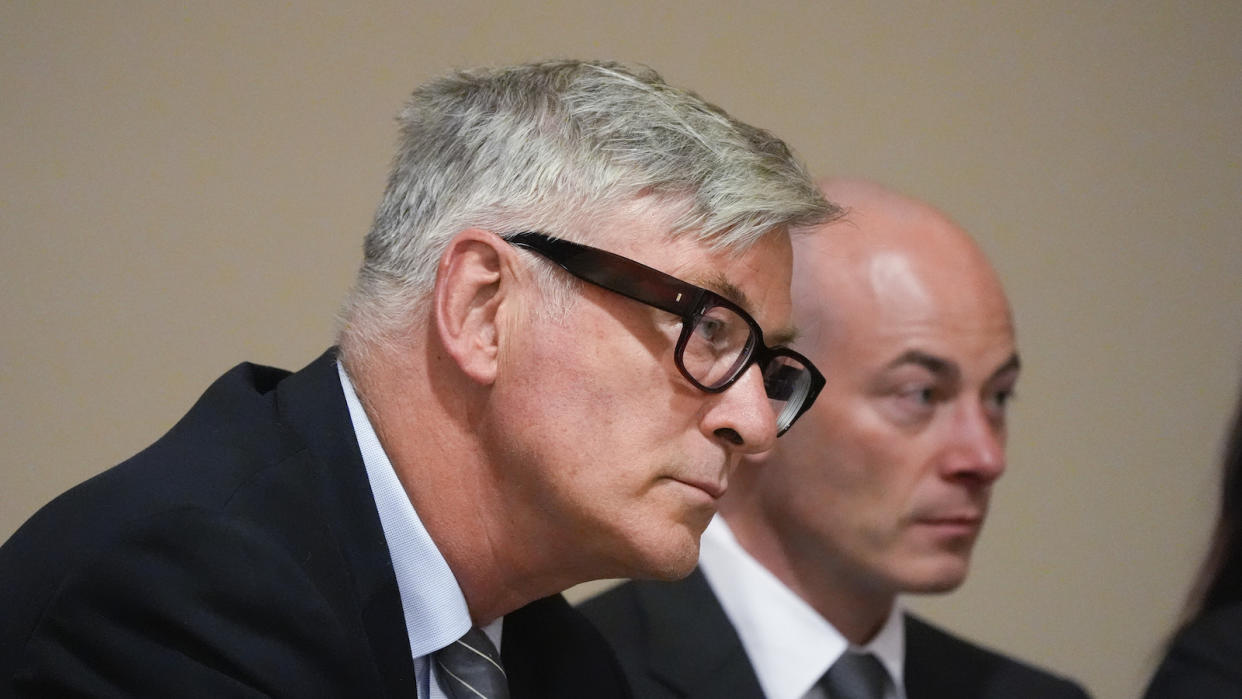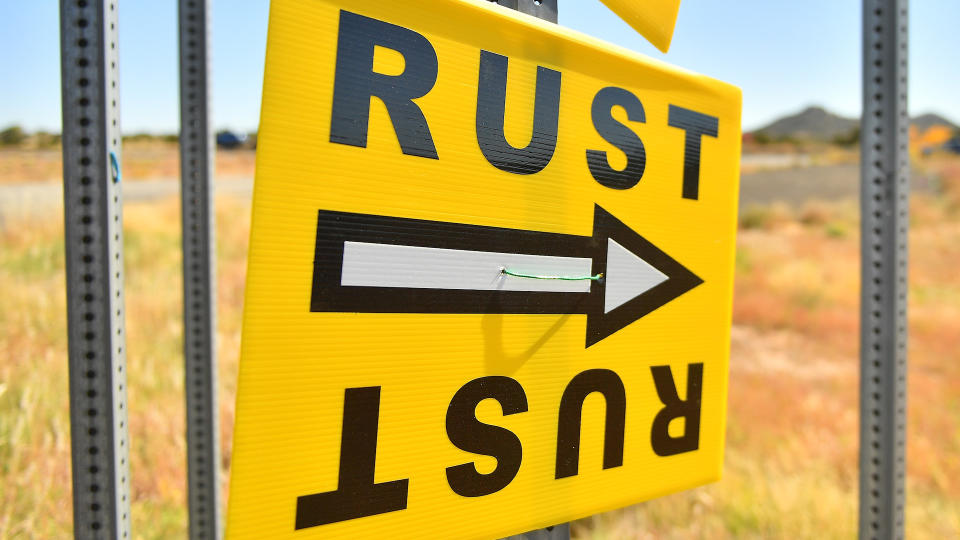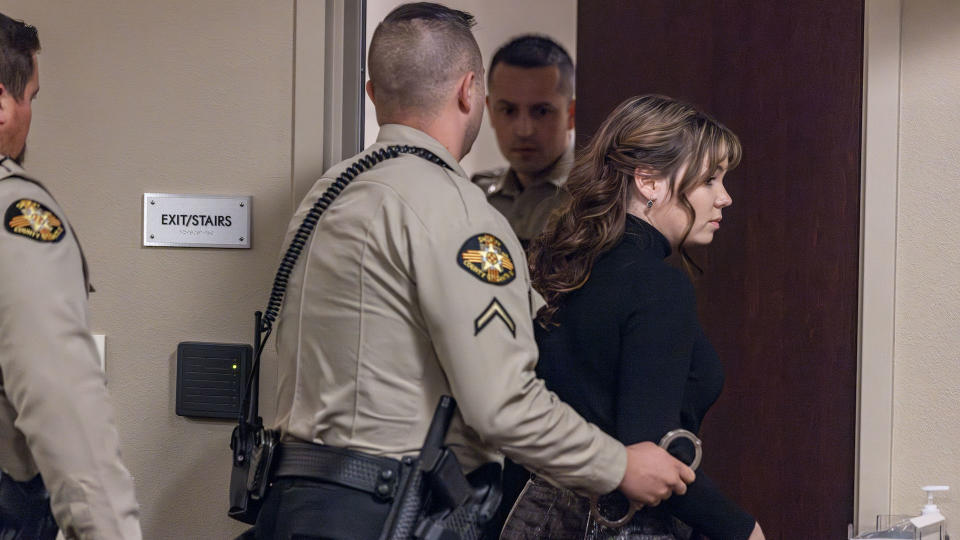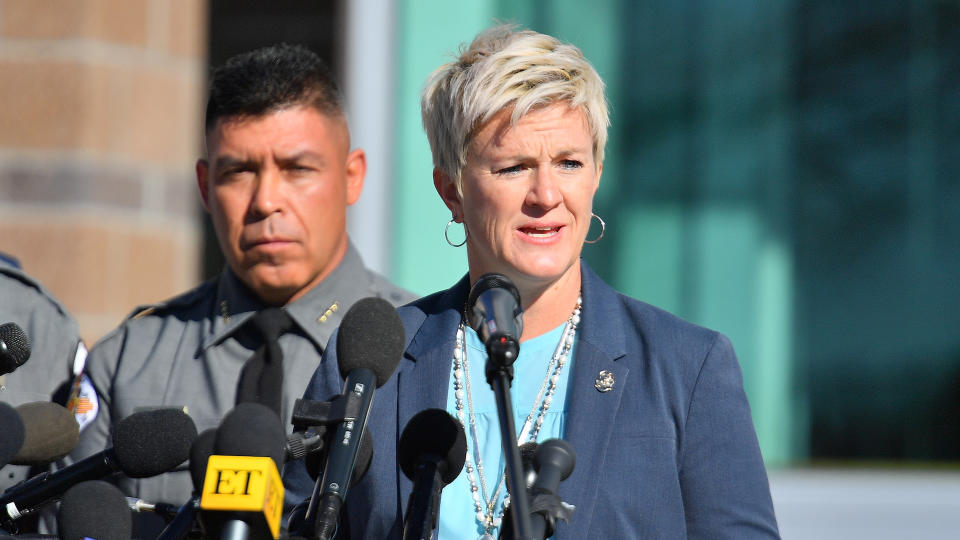Alec Baldwin’s ‘Rust’ Trial (Running Updates): Jury Sent Home as Defense Files Motion to Dismiss

On October 21, 2021, cinematographer Halyna Hutchins was killed when a live round discharged from a prop gun on the set of the indie Western film “Rust.” The man holding the gun: Alec Baldwin.
For the last three years, the ins and outs of what went wrong on that day have consumed Hollywood. Few, though, imagined it might get this far, with Alec Baldwin set to stand trial in New Mexico on a charge of involuntary manslaughter that could land him in prison.
More from IndieWire
Alec Baldwin's 'Rust' Case Dismissed by Judge After Defense Claimed Evidence Was Withheld
'Rust' Armorer Hannah Gutierrez-Reed Sentenced to 18 Months in Prison, the Maximum Penalty
Jury selection began Tuesday, July 9, with Baldwin already in attendance in court following a pre-trial hearing on Monday that even handed Baldwin’s legal team an early victory (more on that later).
We’ll be updating this space with some of the most notable updates from the trial, which will be streaming live starting tomorrow via CourtTV and Law & Crime Network on YouTube.
But how did we get here, what is the prosecution’s case, and what’s at stake for Baldwin? Here’s everything you need to know:
Jury Sent Home
In a surprise revelation on the second full day of the trial, Judge Mary Marlow Sommers has sent home the jury in Baldwin’s “Rust” case after Baldwin’s defense team has filed a new motion to dismiss the case.
The dismissal comes after Baldwin’s attorney Alex Spiro in a cross examination of a witness said new ballistics evidence emerged after armorer Hannah Gutierrez-Reed’s trial ended, in which a so-called “good Samaritan” came forward claiming to have turned in ammunition that came from the same source as the bullet that killed Hutchins. Spiro said this evidence had not been shared with the defense prior to the trial.
Spiro asked crime scene technician Marissa Poppell on the witness stand about a new theory, that “He told you you had been duped by Seth Kenney, didn’t he?” Prosecutor Kari Morrissey objected before the witness could answer, and upon cross examination, tried to downplay the theory Spiro introduced.
The good Samaritan was revealed to be Troy Teske, a former Arizona police officer who is also a friend of Thell Reed, Gutierrez-Reed’s father. Spiro’s reference about Seth Kenney, the supplier for the film’s ammunition, is key to the case’s question about how live ammunition got brought onto the “Rust” set. Prosecution has maintained that Gutierrez-Reed was responsible for bringing the live round, but the evidence calls this into question.
The jury has been dismissed for the weekend as the judge mulls the new request, and court will resume on Monday.
Opening Statements
Prosecution in its opening remarks said Alec Baldwin “played make-believe with a real life gun in a real life work place, and when that violates the cardinal rules of firearm safety, someone can be killed.”
Erlinda Johnson, one of the prosecutors for New Mexico, said this case is “simple and straightforward,” making the case that Baldwin did not do a safety check on the gun, that he pointed the gun, cocked the hammer, and put his hand on the trigger when he was not supposed to be or was not directed to, and he pointed the gun at Hutchins in “reckless disregard” for her life.
Alex Spiro, Baldwin’s lawyer, however in the defense’s own opening remarks countered that these cardinal rules of gun safety are not cardinal rules on movie sets. He said that real bullets are never supposed to be on movie sets, and the jury would hear no evidence that Baldwin had anything to do with bringing that live round on set. He clarified what a “cold gun” is, even giving some Hollywood history while name-checking movies like “Apocalypse Now” and “Spartacus,” and why it’s the prosecution’s responsibility to prove that this accident was “foreseeable.” But because a live round was never supposed to be there, the armorer was never supposed to load one into the gun, and because the safety check had not been performed by the assistant director who was responsible, it was anything but “foreseeable.”
The defense also played a clip of a scene from “Rust” in which you could see Baldwin safely rehearsing, they played a clip of the 911 call in which the script supervisor blamed “the fucking AD” Dave Halls, not Baldwin, for the accident, and they noted that it is not in SAG-AFTRA guidelines for actors to check the gun. Most crucially, they made the case that Baldwin did not “intentionally” pull the trigger, and they argued that the test law enforcement did to prove Baldwin must have pulled the trigger made no sense.
What Is Alec Baldwin Charged With?
Baldwin is charged with one count of involuntary manslaughter in the killing of Hutchins on the “Rust” set. If convicted, Baldwin faces up to 18 months in prison, per New Mexico law.
The New Mexico District Attorney first brought involuntary manslaughter charges against Baldwin on January 19, 2023. At the time, he faced up to five years in prison, but due to a legal error by the DA and special prosecutors, the charges were forced to be downgraded and then dropped. Baldwin originally faced a charge that involved a “firearm enhancement,” but the law he was accused of breaking did not take effect until seven months after the “Rust” shooting took place, and it was determined he could not be charged retroactively.
But exactly a year later to the date, a new involuntary manslaughter charge was brought against Baldwin again, with prosecutors saying they had uncovered new evidence around safety standards on set, as well as footage of Baldwin on set and firing prop guns containing blanks during other scenes. Despite months and multiple attempts by Baldwin’s attorneys to get the case thrown out, his day in court has finally arrived.

What Went Wrong on the “Rust” Set?
While rehearsing a scene at the Bonanza Creek Ranch in New Mexico in which Baldwin would quickly draw his gun and was instructed by Hutchins to aim it at the camera, the gun discharged and struck Hutchins and “Rust” director Joel Souza. Baldwin was told by the film’s assistant director it was a “cold gun,” meaning it was safe, but it was later found that the gun was not checked properly and ultimately contained a live round that resulted in the death of Hutchins.
So much of the “Rust” investigation hinged on how a live round wound up on a film set where live bullets are generally forbidden. Earlier in the film shoot, it was found that there had been other accidental firearm discharges, some crew members were doing target practice, and evidence was revealed in the trial against “Rust” armorer Hannah Gutierrez-Reed that she brought with her a loose bag full of rounds from her previous job.
The accident was the culmination of a series of missteps and cut corners on the “Rust” production. Crew members earlier in the day on October 21 walked off set in protest of what they felt were lax safety and working conditions. Gutierrez-Reed was pulling double duty as both the film’s armorer and prop master, and she later told prosecutors that she only checked dummy rounds “most of the time.” Since then, the exact incidents have led to numerous civil suits filed by former crew members and endless scrutiny from Hollywood.

What Happened to Hannah Gutierrez-Reed?
Gutierrez-Reed, the daughter of legendary armorer and gunman Thell Reed, was sentenced to the maximum of 18 months in prison back on April 15. Gutierrez-Reed in a trial in March was convicted on the same involuntary manslaughter charge Baldwin faces, with prosecutors labeling her work as sloppy and unprofessional, and with her failure to perform her job resulting in the accidental death of Hutchins.
“Rust” was just the second production Gutierrez-Reed, 24, had ever worked on, and a series of texts and videos presented as evidence in which she failed to identify the round that killed Hutchins as a live round rather than a dummy proved damning in court.
Prosecutors in Baldwin’s case have sought to have Gutierrez-Reed testify against Baldwin, but her own lawyers have already made clear that she won’t take the stand. And a judge already denied the prosecution’s request to grant Gutierrez-Reed use immunity that would protect her from further incriminating herself based on what she said on the witness stand.
What Is the Prosecution’s Case Against Baldwin?
In an interview with ABC News after the “Rust” accident, Baldwin was adamant that he did not pull the trigger of the gun when it discharged. Whether or not he did will be key to the prosecution’s case, and investigators were convinced to charge him again after forensics on the gun proved Baldwin must have pulled the trigger for it to have properly fired. If prosecutors can convince a jury that he did in fact pull the trigger, they hope to convince them that Baldwin was reckless in doing so and pointing a gun, even one he thought to be “cold,” at another person.
Other evidence had emerged in which Baldwin was allegedly distracted on his cell phone during the required gun safety training. Gutierrez-Reed’s lawyers pointed the finger at Baldwin to say that she had requested additional safety training time but was denied. Baldwin, being a co-producer on the film, has denied having responsibility for some of the lax safety or hiring decisions, including Gutierrez-Reed, but in civil suits he has faced the brunt of accusations as being culpable for why the “Rust” set was so chaotic.
Jurors in this trial however won’t hear such evidence. In a pre-trial hearing on Monday, Judge Mary Marlow Sommer declared that anything involving Baldwin as a producer could not be brought as evidence.

“I’m having real difficulty with the state’s position that they want to show that as a producer he didn’t follow guidelines and therefore as an actor Mr. Baldwin did all of these things wrong that resulted in the death of Ms. Hutchins because as a producer he allowed these things to happen,” the judge said.
It’s a victory for Baldwin that could make a conviction that much more difficult. A former federal prosecutor already told IndieWire that Baldwin has an advantage given the earlier trial against Gutierrez-Reed. His legal team already has a preview of the evidence that will be used against him, and prosecution has already proven that someone else was responsible for Hutchins’ death.
It’s unclear if Baldwin will take the witness stand in his own defense, but the former federal prosecutor said it was likely.
Will “Rust” Ever Be Released?
Production on “Rust” resumed and was completed in spring 2023, this time shooting in Montana rather than New Mexico. The film needed to be completed for contractual reasons as part of a settlement with Hutchins’ widow in the hopes that proceeds from the film could go to a fund established for Hutchins’ son.
But though “Rust” has been shopped at film festivals, a distributor has not emerged, likely fearing controversy around the film or the uncertainty of Baldwin’s own trial, and it has no release plans or release date.
Baldwin’s trial is expected to last until July 19.
Best of IndieWire
'Song of the South': 14 Things to Know About Disney's Most Controversial Movie
The 55 Best LGBTQ Movies and TV Shows Streaming on Netflix Right Now
A History of Unsimulated Sex Scenes in 17 Cannes Films, from 'Mektoub' to 'Antichrist' to 'Caligula'
Sign up for Indiewire's Newsletter. For the latest news, follow us on Facebook, Twitter, and Instagram.


